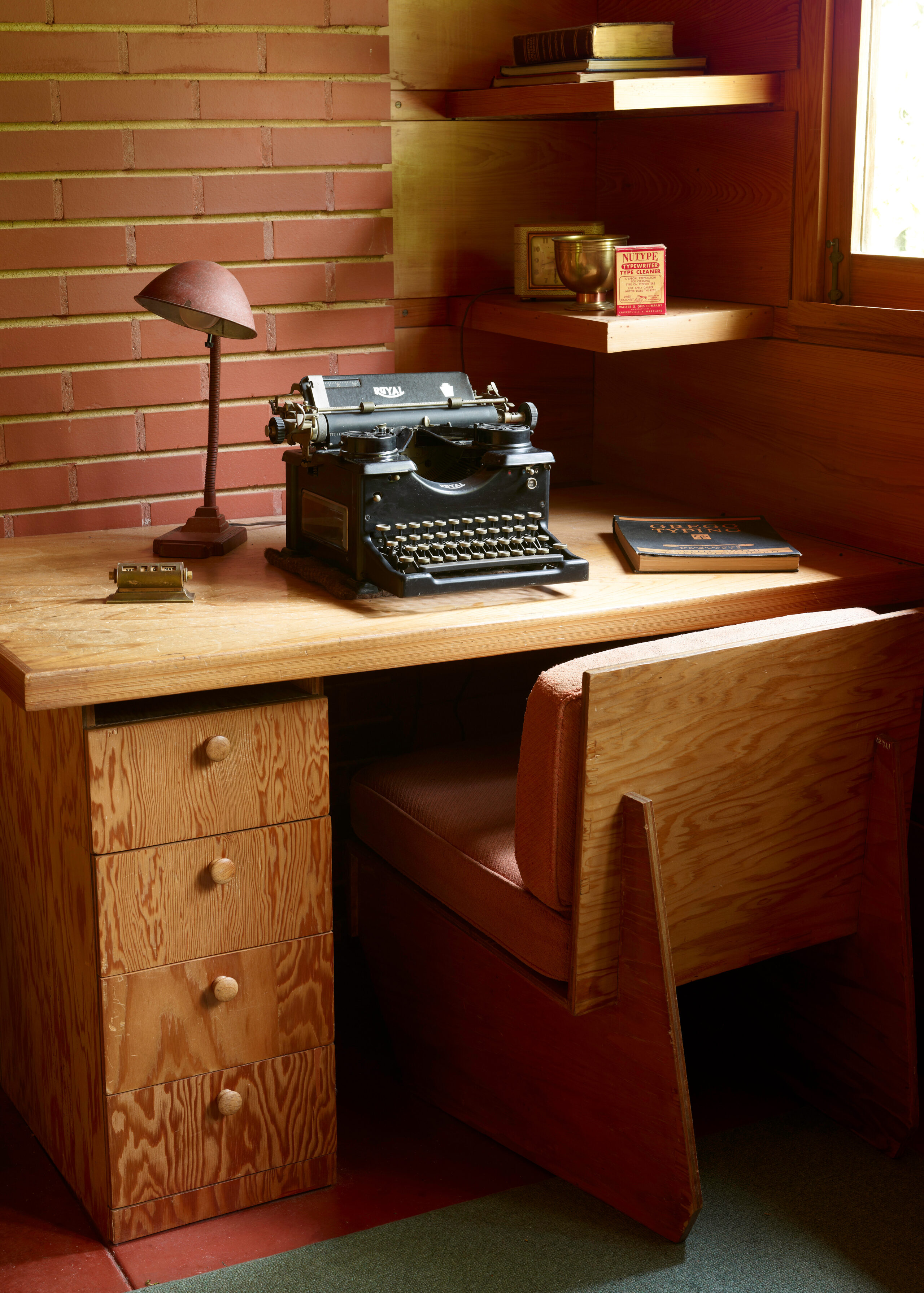Table Of Content

Throughout history, across cultures and social status, people have stitched for need, for enjoyment, and in remembrance. Thanks to the support of people like you, we can tell a fuller American story. It’s a story that does justice to the contributions of women, people of color, and all Americans in shaping our nation and leading us forward. And it’s a story that stirs us all to take pride in our shared heritage and inspires us to create an even more perfect union for generations to come.
National Trust for Historic Preservation: Return to home page
Since 1949, Woodlawn and the surrounding 126 acres have been operated as an historic house museum, coming under the ownership of the National Trust for Historic Preservation in 1957. During the 1930s, Frank Lloyd Wright set his formidable attention towards designing affordable middle-class residences. More than 100 of these modest homes, referred to as Usonian, thought to mean "the United States of North America," were constructed between 1936 and Wright's death in 1959, including the Pope-Leighey house (1940). Commissioned in 1939 by journalist Loren Pope and his wife Charlotte Pope, the Pope–Leighey House was one of the first Usonian houses designed by Frank Lloyd Wright.
Visit Pope-Leighey House
Also on the site is the Frank Lloyd Wright-designed Pope-Leighey House where visitors can explore and be inspired by the Usonian architecture and a vision for affordable, well-designed housing. We share the land with our partner Arcadia Farm for Sustainable Agriculture, whose mission is to create a more equitable and sustainable local food system. We also provide activities throughout the grounds and trails for learning, wellbeing, respite, and enjoyment of the natural environment and its history. His interest in progressive reform aligned with the belief within modernism that architecture could and should have an impact on social issues. Architecture was viewed as a mechanism for promoting progressive beliefs, motivated in part by pushback against corporate growth and landlordism. This principle is demonstrated at the Pope–Leighey House in the attention Wright paid to every component of the Popes' life there, down to the appliances, furniture, and decor.
Futaba Cake Building
Much of the Aquia sandstone trim had predictably weathered, and the worst conditions were patched with mortar, rather than introducing replacement stones. So following the building assessment, the National Trust began an investigation. Wilson and Audra Medve, who at the time was the preservation manager at Pope-Leighey, enlisted architectural conservators Pamela Kirschner and Andrew Fearon, along with researchers from the University of Pennsylvania, to help. They studied letters, photos, and other documentary sources to better understand the house’s materials. Kirschner conducted an in-depth comparison of products that could be used to clean and protect the wood, testing 10 different treatments and rating them for qualities such as longevity, saturation, and historical accuracy.
When seeking out modern materials for the roof, it was decided that using a fluid-applied waterproof membrane with a broadcast sand aggregate would be the best approximation to the look to Wright's original “wearcoat” material. This new location would guarantee future longevity and provide access for visitors to experience one of Wright's earliest Usonian homes for themselves. In 1965, the house was relocated to the grounds of Woodlawn Plantation, removing it from the path of a highway project. Located just outside Washington, D.C., the Pope-Leighey House and Woodlawn Plantation share a 126-acre estate that was originally part of George Washington’s Mount Vernon. The brick and wood used throughout the house are not painted but rather treated with clear wax, which accentuates their natural qualities.[4] The floor is Cherokee Red, one of Wright's signature colors. The Pope–Leighey House, formerly known as the Loren Pope Residence, is a suburban home in Virginia designed by American architect Frank Lloyd Wright.
Today, the Pope-Leighey House contains much of the original furniture and is the only Frank Lloyd Wright home open for regular tours in the DC metro area. SAH Archipedia tells the story of the United States through its buildings, landscapes, and cities. This freely available resource empowers the public with authoritative knowledge that deepens their understanding and appreciation of the built environment. To Wright, the interior was just as important as the construction of the building, and thus furniture and appliances were part of his vision. Today Pope-Leighey House looks much as it did when the Popes moved in 76 years ago, despite the fact that not all of its original materials remain.
The Quaker Scout with Martha Catlin - Alexandria Living Magazine
The Quaker Scout with Martha Catlin.
Posted: Fri, 06 Oct 2023 07:00:00 GMT [source]
The new Woodlawn site, while similar to the Falls Church location in being wooded, has differences; the original orientation was east-west, not the present north-south. The recent restoration, however, allows the house to be approached as it was originally, from below. The original interior cypress has been maintained along with most fixtures and furniture. The brick is a replacement, and although the house still has a radiantheated floor (not the original concrete pad!), it also has 1990s heating, ventilation, and air conditioning. The Pope-Leighey House was one of Wright’s first Usonian designs, and can be immediately recognized as such through its distinct style. Wright used the architectural elements of compression and release, cantilevered roofs, and the large windows that let the outside in, and used cypress boards that were inexpensive and easy to source because the Florida Everglades were being drained at the time.
Journey to Woodlawn
And he designed custom furniture at a slightly smaller scale so that rooms appear larger. Even the radiant heating system frees up a small amount of extra space by removing the bulk of a radiator. Glass, a building material typical of modernism, is featured prominently throughout the house.

Finally, the National Trust for Historic Preservation acquired the home and relocated it to Alexandria, VA in 1965. In 1995, the house was moved once again, by just 30 feet this time, to better preserve its foundation and structural stability. The Pope-Leighey House continues to operate as a historic property and is open seasonally for public tours and private events. Also located on the property is the Pope-Leighey House, a Frank Lloyd Wright designed Usonian home.
And on June 8, Wright’s actual day of birth, there will be a big picnic at the site. During this second move, other changes were made to the home, including a complete reconstruction of the roof. As seen in the original image of the house in its Falls Church location, there is a clean roofline devoid of visible flashing. As part of the roof work in 1995, gravel was installed on the roof to weigh down the new roofing system, requiring the installation of a sizeable gravel stop edge flashing. During this time, Quakers sold parcels of land to other antislavery farmers and members of the local free Black population. These communities of Quakers and free Black people thrived here into the early 20th century.
Boundary Stones explores local history in Washington, D.C., suburban Maryland and northern Virginia. This project is a service of WETA and is supported by contributions from readers like you. Construction began in 1940.[3] Wright chose his apprentice of two years, Gordon Chadwick, as the general contractor who would oversee construction of the home.
However, after the old roofing and flashing were removed, substantial areas of water damage and rot were discovered within the roof structure, including some significant structural damage. Additionally, several wood fascia boards were found to be severely deteriorated, necessitating their replacement. Following additional structural assessment and planning, areas of roof framing were either reinforced or replaced entirely, adding significant time and cost to the project.
The work was completed by the summer of 2015, and it cost the National Trust a grand total of $13,000, thanks to the volunteer labor and a $10,000 donation to Woodlawn from the Jessie Ball duPont Fund. The hope now, Wilson says, is that her team’s research can be replicated at other Frank Lloyd Wright sites with wood siding. The wood conservation project started in 2011, when Jablonski Building Conservation completed a building assessment and treatment report. (That work was funded by a grant from the federal Save America’s Treasures program.) Years of deferred maintenance had left the wood looking worn and dull.
The historical core of the site also now boasts a modern demonstration and educational farm powered by partner Arcadia Center for Sustainable Food & Agriculture (who also operate a working farm on another area of the property). In 1846, a group of anti-slavery Quaker families from the north purchased the property and sold off parcels of Woodlawn’s land to free Black and other anti-slavery farmers who set up homesteads on the land. Woodlawn became an example of successful free-labor agriculture in a region that was dependent on enslaved labor. Subsequent owners of Woodlawn, helped to preserve the house into the twentieth century. In the past years, preservation work at the Pope-Leighey House was focused on the exterior cypress.

No comments:
Post a Comment